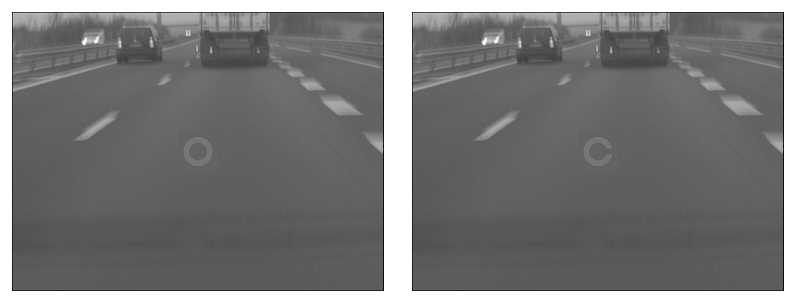Experiments have
been proposed and carried out to evaluate [TMOs]
and to compare them. Most of those experiments were based on visual
appearance [Drago et al.]. But despite
the numerous operators proposed and published, few methods ([Ledda
et al.], [Viénot et al.])
have been put forward to compare them to the real scenes they are
trying to represent.
I have designed
psychophysical experiments in order to evaluate the operator I developed
and to validate it for visibility studies. Those tests aim at comparing
visual perofrmances of observers, which is a fundamental aspect of
road visibility. Subjects are presented a visual acuity test which
has two ways out: success or failure. The test is first carried out
with a high dynamic luminance scene, named HDR image, considered as
the reference scene. In a second time, tests are carried out with
the same scene, processed by a TMO, to compress the dynamic of luminance.
The goal is to validate the use of synthetic images for road visibility
studies.
Example of a
visual acuity test: the gap in the ring (middle of the image) appears
during a very short time. The observer indicate the position of the
gap in the ring. On the left, a ring without gap and on the right
a ring with a gap on the right:
